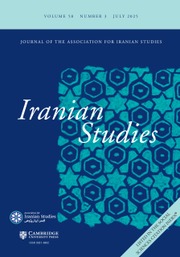No CrossRef data available.
Article contents
Representation of Aphrodite and Eros on Sasanian Clay Bullae: Evidence from the Fire Temple of Ādur Gušnasp at Takht-e Solaymān
Published online by Cambridge University Press: 24 January 2025
Abstract
This article examines five Sasanian bullae from the fire temple of Ādur Gušnasp with seal impressions depicting Aphrodite and Eros, and Aphrodite Anadyomene. It is argued that the original seal with Aphrodite and Eros likely dates from the late 1st century BCE to the early 1st century CE, reused between the 5th–7th centuries CE, while the Aphrodite Anadyomene seal is from the 2nd or 3rd century CE. Contextualizing these findings within Graeco-Roman and Iranian cultures, this article explores reinterpretations of Graeco-Roman iconography for both Zoroastrian and non-Zoroastrian audiences, as well as highlights that bullae with concave impressions of cylindrically curved objects on the reverse had once been attached to vessels, not just documents. Additionally, this article also discusses other sealings on the new bullae, some with Middle Persian inscriptions, identifying a mgw (priest) and an astrologer, providing the first attestation of the word axtar (constellation) on a Sasanian seal.
- Type
- Article
- Information
- Copyright
- Copyright © The Author(s), 2025. Published by Cambridge University Press on behalf of The Association for Iranian Studies



